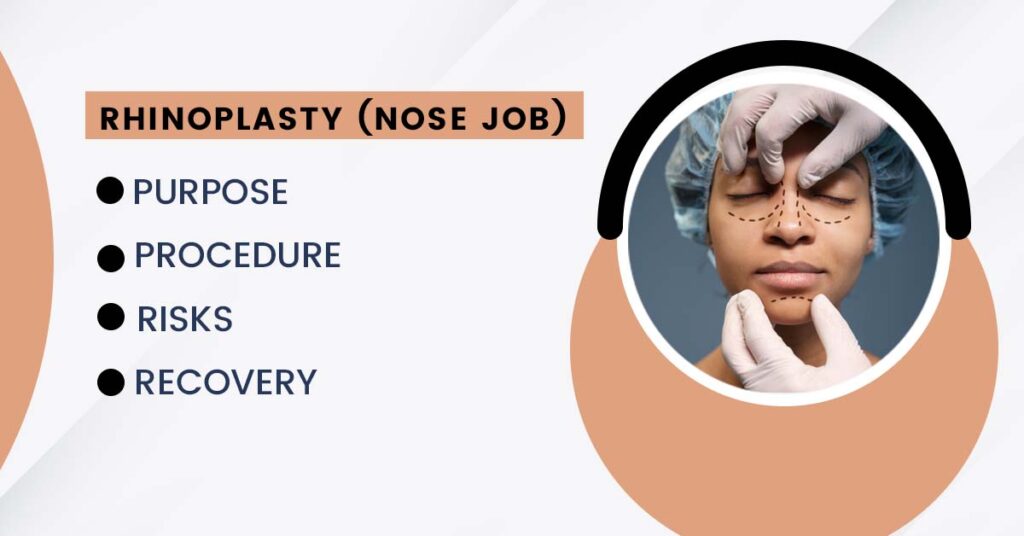What is Hair Transplant?
The hair transplant procedure involves placing new hair on bald and thinning areas of the scalp. It’s also known as hair restoration or hair replacement, and it’s normally reserved for those who have exhausted all other options for hair loss treatment. To perform a hair transplant, a dermatologist or plastic surgeon should be consulted (healthcare professionals specializing in reconstructive surgery or reconstructive medicine).
The procedure of Hair Transplant
A surgeon uses a tiny needle to numb an area of your head with a local anesthetic after thoroughly cleaning your scalp.
There are two methods FUT and FUE that are used for harvesting follicles for transplantation.
Transplantation of individual hair follicles is known as follicular unit transplantation (FUT).
- To remove the hair, a surgeon will use a scalpel to cut a strip of the scalp skin from the back of the head. This incision is about half an inch long.
- Stitches are used to seal the wound.
- The surgeon divides the resected scalp piece into small pieces with the help of a magnifying lens and a sharp surgical knife. When implanted, these pieces help grow hair that looks natural.
- Hair follicles are extracted directly from the back of the head using hundreds to thousands of microscopic punch incisions in follicular unit extraction (FUE).
- During the hair transplantation, the surgeon cuts tiny holes in your scalp using a blade or a needle. These holes are then filled with hairs very gently.
- The surgeon may perform hundreds or thousands of hair transplants in one session.
- Your scalp will be covered with grafts, gauze, or bandages for a few days.
A hair transplant can take 3 to 4 hours to complete. Your stitches will be removed ten days following surgery.
Three or four treatments may be required to achieve your desired full head of hair. Patients often schedule their sessions many months apart to allow the transplants to fully heal.
Types of Hair Transplant
Hair transplant surgery can be performed in several ways, including:
- Grafting.
- Scalp reduction.
- Flap surgery.
- Tissue expansion.
How is grafting performed?
The most prevalent type of hair transplant surgery is hair grafting. A healthcare provider removes little bits of healthy hair from the scalp. They sometimes use a small, round punch to remove skin that has 10 to 15 hairs on it. These grafts were once known as “hair plugs.” One to two hairs are included in micro-grafts.
The treatment may take many hours. The majority of patients remain awake during the procedure, however, they are given medicine to numb the scalp. Depending on how much hair your provider needs to move, you may require many operations. Between operations, your scalp will need to recuperate for a few months.
How is scalp reduction performed?
Scalp reduction is also known as alopecia reduction by providers. A surgeon removes a small patch of bald skin from the scalp during this surgery. They loosen hair-bearing skin nearby and draw it over the bald spot. After that, they sew it in place.
Read Also: Earlobe Repair – Causes of Earlobe, Risk Factors, Cost, and Procedure
Scalp reduction is recommended for balding on the top and back of the head. These areas are generally bordered by hairy skin. To obtain full coverage, some practitioners combine scalp reduction and hair implants. Scalp reduction, like grafting, usually just necessitates the application of numbing medicine to the scalp. This procedure doesn’t require general anesthesia.
How is flap surgery performed?
If you have significant bald spots near the front of your head, your surgeon may recommend flap surgery. Flap surgery is done in stages over a few weeks. Around three sides of the donor location, the surgeon makes minor incisions. The fourth side is still linked, allowing the body to keep its original blood supply. This method aids the surgeon in cutting the flap and lifting it over bald spots. General anesthesia is required for flap surgery.
How is tissue expansion performed?
If you have baldness on your head or disfigurement from burns, your doctor may recommend tissue expansion surgery. Tissue expansion necessitates general anesthesia and entails the following steps:
- A reconstructive surgeon places an implant beneath the hairline, where it will remain. It’s called a tissue expander since it’s shaped like a balloon.
- The expander is gradually inflated over several weeks to extend the skin.
- A second surgery is performed by the surgeon to cover the bald spot with stretched skin.
Procedure and Recovery after Hair Transplant
The majority of hair transplant surgeries are outpatient procedures, meaning you can go home the same day. The length of your recuperation will be determined by the type of transplant you received. You may be able to do the following in the days following surgery:
- On day 1, Take off the bandages.
- Wash your hair on the second day.
- On days 3–5, begin light activities and return to work.
- After ten days, take out the stitches.
- Return to exercise or sports after 3 weeks.
Benefits of Hair Transplant
It’s the perfect answer for men and women who want to seem younger and more appealing. Hair loss is something that everyone experiences at some point in their lives, but hair transplant surgery can restore your confidence as well as your appearance. The following are some of the many advantages of hair transplant surgery.
1. Eliminate Baldness
Your hair-related issues will be resolved with a hair transplant. You won’t have to worry about bald spots or a receding hairline anymore. A hair transplant thickens and reshapes your receding hairline by adding volume to balding or thinning areas of your head. Hair transplants have a high success rate, and you’re unlikely to experience baldness again.
2. Natural-looking hairline
Except for those you tell, hair restoration should be undetectable. A hair transplant might result in a more natural-looking hairline. You can expect long-term effects as well as a lush, healthy head of hair to flaunt.
3. Improves Your Self-Esteem And Appearance
People who lose their hair at a young age are more self-conscious of their appearance. Hair loss can make you feel bereft and insecure, and hurt your self-esteem. Because our sense of style and self-image is so embedded in our hair’s look, people are often emotionally tied to it. Hair loss can have an emotional and physical impact on us, hurting our work and personal lives. Hair transplant surgery, on the other hand, can restore your confidence and make you feel like yourself again. You’ll have a lovely, full head of hair that will improve your appearance and make you feel better.
4. Low-maintenance hair care
Your new hair is simple to style. The transplanted hair looks and feels like your natural hair, so you won’t need to buy or apply any special shampoos or chemicals to keep it thick. Simply apply any medication or post-transplant hair cream or spray that your doctor provides following the surgery, and then wait until your doctor tells you to shampoo your hair. Purchase a light shampoo to cleanse the region surrounding the hair follicles after you’ve been given permission, and wipe your scalp dry with a soft towel once you’ve finished rinsing. Maintaining it is as easy as that.
5. Cost-effective surgery
Although hair transplant surgery may appear to be costly at first, it is cost-effective in the long term. When you analyze the expenses of other therapies, you’ll see that, while they appear to be low at first, they quickly pile up. The costs of temporary hair treatments will eventually exceed the cost of a single hair transplant procedure. Consider hair transplant surgery if you want a long-term, cost-effective, and permanent solution to your hair loss.
Complications of Hair Transplant
Before the operation, talk to your doctor or surgeon about the following medical issues:
- physical condition – a physical examination can assist your doctor or surgeon in determining whether the therapy is appropriate.
- medical history — some pre-existing conditions and previous surgery may have an impact on how this operation is performed, including the type of anesthesia utilized.
- Hair evaluation – comprises your hair growth pattern, the level of your hair loss, your family’s hair loss history, and any previous surgical or medicinal hair loss treatments you’ve received.
- risks and complications — it’s critical to understand the risks and complications before deciding whether or not a hair transplant is good for you.
- Tell your surgeon about any medications you’re taking or have just started taking, including over-the-counter supplements like fish oils and vitamin supplements.
- previous medication responses – inform your surgeon if you’ve ever had a negative reaction or a side effect from any medicine, including an anesthetic.
- preparation for surgery – your surgeon will give you specific advice on how to prepare for surgery at home. For example, you might be told to take a certain drug or adjust the dosage of the one you already have. Pay close attention to all of the directions.
Side effects after Hair Transplant
The doctor will give pain relievers after the hair transplant process is completed. Most patients experience hair transplant side effects during this recovery period, however, this only lasts a few days. The following are the top ten side effects to be aware of.
1. Bleeding Scalp
One of the most prevalent hair transplant side effects is bleeding. Bleeding is a possible side effect of hair transplantation surgery in rare instances. While some bleeding is almost certain to occur, it is easily controlled with simple methods. Continuous bleeding, on the other hand, may necessitate further stitches.
2. Scalp Infections
Scalp infection is one of the other hair transplant side effects. Although uncommon, a hair transplant infection is a possible side effect. However, the infection occurs in one out of every ten thousand instances.
3. Thinning Of Hair Girth
Hair thinning is yet another common side effect of hair transplant surgery. This occurrence occurs in conjunction with hair loss, which may occur shortly after a successful surgery. This event could damage even the unaffected zone.
4. Itching
An itchy scalp affects at least three people out of every ten. Itching is one of the most prevalent negative effects of hair transplantation. There is no one way to deal with the itching, but if it worsens get it evaluated before it continues to worsen. Scabs are a common cause of itchy scalp and are readily treated with regular shampoo application. It is recommended to consult a medical specialist if the discomfort does not disappear. Special moisturizing oils are available to aid with this problem.
5. Scarring
Scarring is one of the hair transplant adverse effects that might occur after the procedure. Only a few transplant recipients are more prone to scarring than others. Scarring is very common in patients who chose the strip hair transplant procedure. This is one of the hair transplant side effects that is easily cured with correct medical therapy.
6. Cysts
There are few cancerous cysts among small protrusions known as cysts. One of the most common hair transplant adverse effects is a cyst. A cyst may form on a patient’s scalp if hair follicles have been pushed deeper into the layers. Qualified medical professionals should handle cyst treatment.
7. Pain
Radiating pain is a common side effect of many procedures, and it is also one of the hair transplant adverse effects. The use of drugs can improve the situation when the pain becomes severe, but in most cases, it is manageable. The pain usually doesn’t persist for a long period which means it is discontinuous and occurs in different phases.
8. Numbness
Numbness is the most common and mostly occurring side effect of the hair transplant. Usually, it takes around 18 weeks for the numbness to go away. Patients should seek medical advice if they continue to experience numbness beyond 18 weeks.







